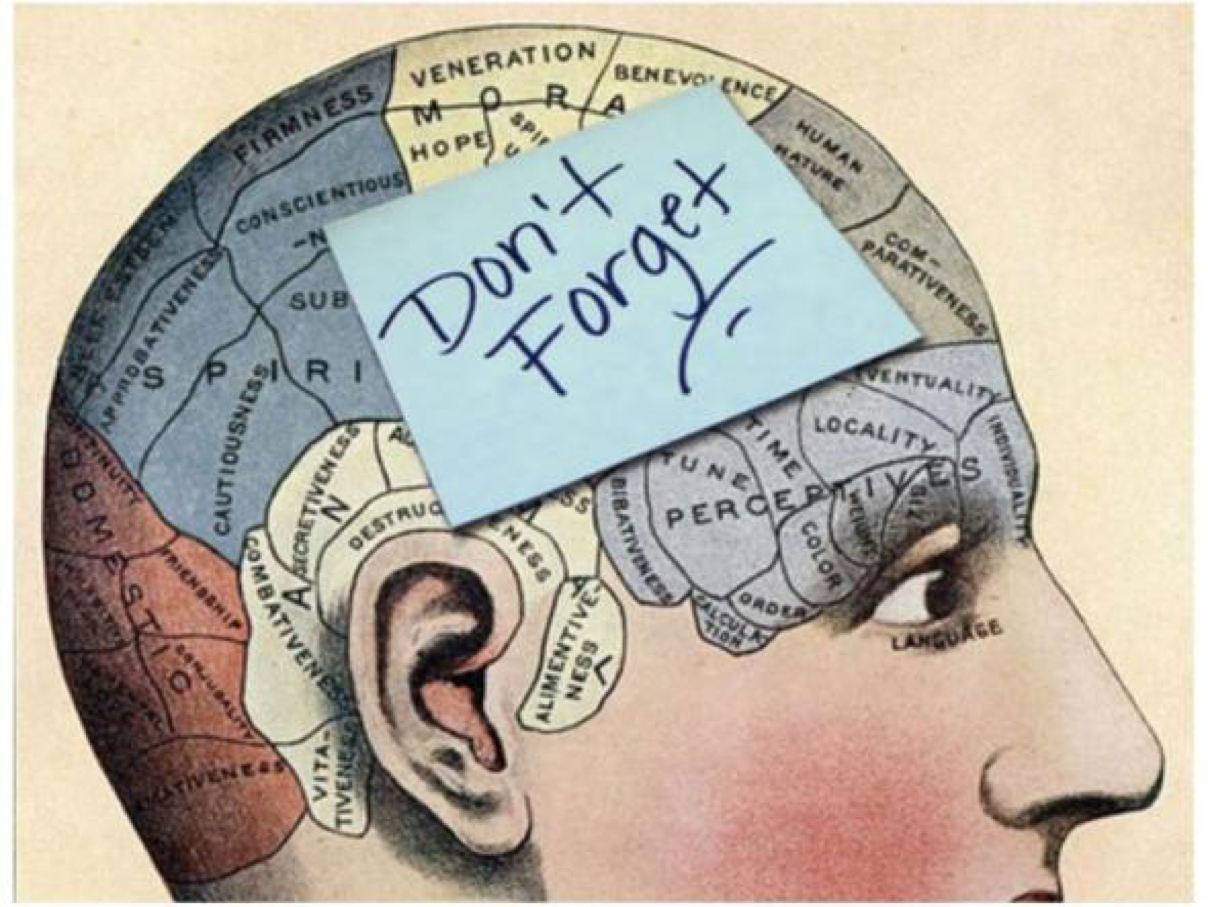As we discussed in the previous blog article in this series, there are three main steps in the memory process: encoding, storing and retrieving. Here, we will take a closer look at the first step – encoding – and its role in learning.

Encoding is the first process of memory, during which information is transformed so that it can be stored. This is a physiological process which starts with attention. A memorable event causes the neurons to fire more rapidly, organizing the information into a systematic array that can be recalled later. How we encode information determines how it will be stored and what cues will be effective when we try to retrieve it.
Think of memorizing a poem, for example. The brain does not encode each word by itself, isolated and alone, but creates patterns of words, making the experience more intense and increasing the likelihood that the event is encoded as a memory (Hunt R. &., 1993). Emotion tends to increase attention, and the emotional element of an event takes on an unconscious pathway in the brain. Once the perceived sensations are decoded, they are then combined into one single experience (Hunt, 2003) and associated with previous similar events. The stronger the emotion, the stronger the synapses storing the information and the easier the retrieval process.
Memory encoding is an active and selective process that organizes and reorganizes the information. Thus, teaching someone how to memorize and learn, is to all intents and purposes a lesson on how to organize information. There are four main types of encoding, and knowledge of each can help us design better learning experiences:
- Acoustic encoding is the processing and encoding of sound, words, and other auditory input for storage and later retrieval. By associating the information with sounds, by sounding out the words, the neural connections become stronger and aid in the recall process.
- Visual encoding is the process of encoding images and visual sensory information. Visual sensory information is temporarily stored within the iconic memory before being encoded into long-term storage. The amygdala (located in the medial temporal lobe of the brain which has a primary role in the processing of emotional reactions) fulfills an important role in visual encoding, as it accepts visual input in addition to input from other systems and encodes the positive or negative values of conditioned stimuli.
- Tactile encoding is the encoding of how something feels, normally through the sense of touch. Physiologically, neurons in the primary somatosensory cortex of the brain react to vibrotactile stimuli caused by the feel of an object.
- Semantic encoding is the process of encoding sensory input that has particular meaning or can be applied to a particular context, rather than deriving from a particular sense.
Acoustic Encoding
Let’s look at how we would tap into these encoding techniques, starting with acoustic encoding. If acoustic encoding is at work, will retention be improved if you simply add music to your eLearning course? Actually, this type of strategy could distract from the learning. Research has shown that learning from text alone, or from audio alone, is more effective than learning from text and identical audio simultaneously. Using appropriate voiceover, however, can help improve retention. Here are some tips on how to use audio encoding properly:
- Audio is essential when sounds themselves are the object of learning, as when learners have to hear pronunciation, learn to troubleshoot equipment through sound, music lessons, etc.
- Audio can sometimes be used alone or in combination with graphics only.
- Step-by-step instructions should be text based, but audio may not be necessary.
- Use narrated audio for animated sequences, but text only for sequences under the user’s control.
Visual Encoding
Visual encoding is one of the most commonly used technique in learning, since it is one of the most natural approaches the human brain employs. If you were to read over this list of words: house, tree, truth, book, value, and were asked later to recall the words from this list, you would probably have an easier time recalling the words house, tree, and book, and a more difficult time recalling the words truth and value. The human brain can recall images (mental pictures) more easily than words alone. When you read the words house, tree, and book you created images of these things in your mind. These are concrete, high-imagery words. On the other hand, abstract words like truth and value are low-imagery words. High-imagery words are encoded both visually and semantically (Paivio, 1986), thus building a stronger memory. Iconic memory plays a very important role in visual encoding. Some easy-to-follow tips for visual encoding:
- Always select graphics that align with the text and the learning goal. Irrelevant graphics actually hinder learning. Ruth Clark offers a summary of graphics that work well to illustrate five key content types: facts, concepts, processes, procedures, and principles.
| Content Type | Graphic Support | Example |
|---|---|---|
| Fact | Realistic illustrations of specific forms, screens, equipment | Illustration of software screen |
| Concept | Realistic illustrations of multiple examples of the concept | Pictures of good Web pages to illustrate the concept |
| Process | Animated diagrams illustrating stages of process | Activities in a computer network |
| Procedure | Video or animated demonstrations of near-transfer task being performed | Animation of how to use a software application |
| Principle | Video or diagrams of far-transfer tasks being performed | Video of effective sales closing techniques |
- Use the contiguity principle and align the graphics to the text on the screen. Using a scrolling screen with the words placed at the top and the illustration under the words so that when you see the text you can’t see the graphic and vice versa is a bad design and learning decision.
- Use text sparingly and do not provide too much information.
- Use previously known visuals to ensure recall – when we see a visual of an already known concept or product, we are more likely to remember the information learned.
Tactile Encoding
Since tactile encoding uses the sense of touch, it is not useful in eLearning. However, it can very easily be used in blended learning in the “face to face training” pieces. For example, in the medical field, much of the learning is done through practices like dissection, palpation, and examination, where the sense of touch is vital.
Semantic Encoding
Semantic encoding deals with the processing and encoding of the meaning of something (a word, phrase, picture, event) as opposed to the sound or vision of it. Various strategies can be applied in learning such as chunking and mnemonics to aid in encoding, and in some cases, allow deep processing, and optimizing retrieval. “Mnemonics” refers to any system or device designed to aid memory. This is usually patterns of letters, ideas, or associations, such as ROYGBIV to remember the colors of the rainbow. Some commonly used mnemonics in learning are:
- Acronyms or expression mnemonics: “Every Good Boy Does Fine” can help you remember the lines of the treble clef in music (EGBDF).
- Music mnemonics: Music is a powerful mnemonic because it provides a structure for information and encourages repetition. Learning the alphabet through song is a good example.
- The memory palace is a mnemonic device that’s as tried and true as it gets. Invented by orators in ancient Roman and Greek times, the memory palace (or mind palace or “method of loci”) technique is effective and enjoyable to use. You establish a “memory palace” and associate information with it.
- Chunking is another mnemonic device that can make large amounts of information more memorable. The chunking technique involves grouping items, finding patterns in them, and organizing the items. You might group items on your grocery list by aisle, for example, or look for connections between events in a historical period to create chunks of them, such as moments in World War II that involved France.
Other general tips for improving memory encoding are listed below.
- The volume of the material is important in memory encoding. The higher the volume, the more difficult it is to memorize it all.
- The degree of systematization of the material (the greater it is systematized, the easier it is to memorize) and the degree of familiarity with the content can also have a great impact on the memory encoding process.
- There are two ways of presenting information: simultaneous or sequential. Sequential presentation of the information makes it easier to memorize.
Have you used any of these techniques to improve retention? Any not listed here? Let us know. See you in the next blog post!







